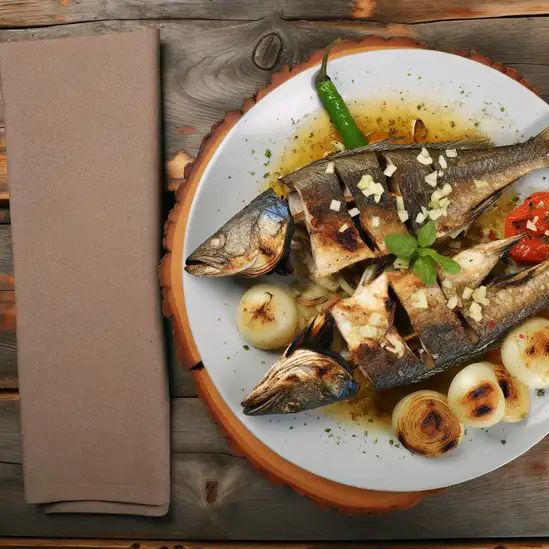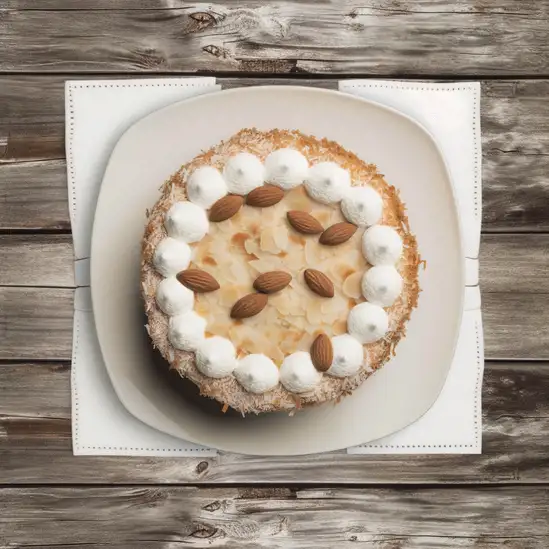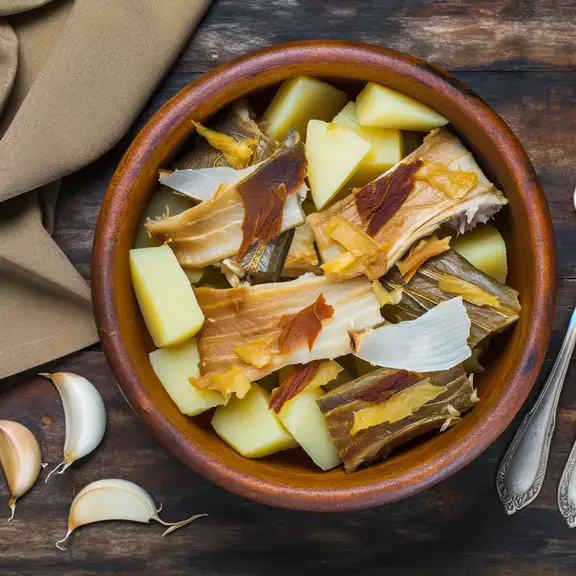



If you ever find yourself dreaming of a place where the Adriatic breeze carries the scent of pine and salt,Grad Opatija is that kind of magic. Walking along its seaside promenade,you’ll feel like you’ve stepped into a timeless postcard—elegant villas with red-tiled roofs peek through lush gardens,and the gentle lapping of waves creates a soothing soundtrack. There’s a calm sophistication here,but it’s never stuffy; instead,it’s warm and inviting,like a friend who’s lived a rich life and loves sharing stories over a glass of local Malvazija wine. The city’s charm lies in its blend of old-world grace and vibrant coastal life. Strolling through the town,you’ll catch the aroma of freshly baked pastries mingling with the salty sea air,and the chatter of locals enjoying their morning coffee at cozy cafés. The architecture whispers tales of Austro-Hungarian elegance,while the lively markets burst with fresh seafood and colorful produce,inviting you to taste the region’s bounty. What really stays with you is the feeling of balance—between relaxation and discovery. Whether you’re wandering the lush parks,dipping your toes in the clear blue waters,or savoring a sunset from a terrace,Grad Opatija wraps you in a gentle embrace. It’s a place that invites you to slow down,breathe deeply,and soak in the simple pleasures of life by the sea.
The information on this page is currently being reviewed by Tripkliq and should be used as a guide only
Eng word: Hello
Eng pronunciation: Bohk
Local language: Bok
Eng word: Goodbye
Eng pronunciation: Doh-vee-jen-ya
Local language: Doviđenja
Eng word: Thank you
Eng pronunciation: Hvah-lah
Local language: Hvala
Eng word: How much
Eng pronunciation: Koh-lee-koh
Local language: Koliko
Eng word: Toilet
Eng pronunciation: Toh-ah-let
Local language: Toalet
Eng word: Help me
Eng pronunciation: Poh-moh-zee mee
Local language: Pomozi mi
Eng word: Yes
Eng pronunciation: Dah
Local language: Da
Eng word: No
Eng pronunciation: Neh
Local language: Ne
Eng word: Excuse me
Eng pronunciation: Oh-proh-stee-teh
Local language: Oprostite
Opatija's rise as a tourist destination began in the late 19th century when the Austrian Southern Railway Company built the first luxury hotel, Hotel Kvarner, in 1884. This marked the beginning of Opatija's transformation into a fashionable resort town.
The Lungomare is a scenic coastal promenade that stretches for 12 kilometers from Volosko to Lovran. Built in 1889, it offers stunning views of the Adriatic Sea and is a favorite spot for both locals and tourists.
Villa Angiolina, built in 1844, is one of Opatija's most iconic landmarks. It was the first villa in the town and played a crucial role in attracting the European aristocracy to Opatija. Today, it houses the Croatian Museum of Tourism.
The Maiden with the Seagull is a famous statue located on a promontory in Opatija. Created by sculptor Zvonko Car in 1956, it has become a symbol of the town and a popular photo spot for visitors.
Opatija is known for its lush parks and gardens, many of which date back to the 19th century. The most famous is the Park Angiolina, which features exotic plants and trees from around the world.
The Church of St. James, built in the 15th century, is one of the oldest buildings in Opatija. It was originally part of a Benedictine abbey and is now a popular site for visitors interested in the town's religious history.
Opatija was part of the Austro-Hungarian Empire until the end of World War I. The town's architecture, culture, and even its cuisine still reflect this historical influence, making it a unique blend of Croatian and Austrian heritage.
The Opatija Riviera is a stretch of coastline that includes several charming towns and villages. Known for its mild climate and beautiful scenery, it has been a popular holiday destination for over a century.
Opatija's Open Air Theatre, located near the sea, hosts a variety of cultural events, including concerts, plays, and film screenings. It is a testament to the town's vibrant cultural scene and its commitment to the arts.
In Grad Opatija, the most common Power Adaptor is Type C, Type F.



A traditional omelette made with seasonal vegetables, herbs, and sometimes seafood, reflecting the local flavors.

A slow-cooked dish made with meat (usually lamb or octopus) and vegetables, prepared under a bell-like lid covered with embers.

Grilled fish, typically fresh catch from the Adriatic Sea, seasoned with olive oil, lemon, and herbs.

A popular dessert made with layers of coconut, cream, and almonds, often enjoyed as a sweet treat in local cafes.

Salted cod prepared in various ways, often served with potatoes and a garlic-olive oil sauce, especially popular during the winter months.


A traditional dish made with scampi cooked in a sauce of garlic, parsley, and white wine, often served with polenta.
If you ever find yourself wandering through the sun-drenched streets of Dubrovnik,you’ll immediately feel like you’ve stepped into a living storybook. The city’s ancient stone walls rise proudly against the sparkling Adriatic,and as you stroll along the marble-paved Stradun,the salty sea breeze mingles with the scent of fresh pine and blooming bougainvillea. There’s a rhythm here—a gentle hum of life where history and modern charm dance together effortlessly.
Dubrovnik’s character is woven into every corner:the clatter of café cups,the murmur of locals chatting in cozy taverns,and the distant call of seagulls overhead. You can almost taste the city in the air—briny and fresh,with hints of grilled seafood and ripe figs from the markets. Sitting at a seaside restaurant,watching the sun dip behind the fortress walls,you’ll savor dishes bursting with Mediterranean flavors,paired with a glass of crisp Croatian white wine.
What makes Dubrovnik truly special is how it balances its rich past with a vibrant present. The city’s narrow alleys invite exploration,revealing tucked-away galleries,artisan shops,and lively squares where music spills out into the streets. Whether you’re tracing the footsteps of ancient mariners or simply soaking up the golden light on a quiet terrace,Dubrovnik feels like a warm embrace—inviting,timeless,and utterly unforgettable.
If you ever find yourself wandering through Split,it’s like stepping into a living,breathing storybook where ancient history and vibrant modern life dance together effortlessly. The moment you stroll along the Riva promenade,the salty breeze from the Adriatic mingles with the aroma of fresh espresso and grilled seafood wafting from nearby cafés. Locals chat animatedly in the sun-dappled squares,their laughter blending with the distant hum of boats bobbing gently in the harbor. There’s a laid-back energy here that feels both timeless and alive,inviting you to slow down and soak it all in.
Split’s heart beats strongest in Diocletian’s Palace,a sprawling Roman fortress that’s less a museum and more a neighborhood where people live,shop,and gather. Walking through its ancient stone alleys,you’ll catch glimpses of colorful markets,artisan shops,and cozy taverns tucked into centuries-old walls. At night,the city transforms as lanterns flicker on,and the sound of live klapa singing—traditional a cappella harmonies—drifts through the air,wrapping you in a warm,soulful embrace.
What really makes Split unforgettable is how effortlessly it blends the old with the new. You can savor a plate of fresh octopus salad while watching fishermen haul in their catch,then wander to a rooftop bar for a cocktail as the sun sets behind the islands. It’s a place where every corner tells a story,every meal feels like a celebration,and every moment invites you to become part of its ongoing tale.
If you ever find yourself wandering the Dalmatian coast,Zadar is one of those places that sneaks up on you with its quiet charm and unexpected magic. The moment you step onto its ancient stone streets,there’s this warm,timeless feeling—like the city is gently humming a tune just for you. The salty breeze from the Adriatic mingles with the scent of fresh pine and blooming jasmine,wrapping around you as you stroll along the waterfront. It’s a place where history isn’t just in museums; it’s alive in the crumbling Roman ruins,the medieval churches,and the lively squares where locals gather to chat and sip coffee.
What really sets Zadar apart is its playful spirit. You’ll hear it in the waves as they dance through the Sea Organ,an extraordinary installation that turns the sea’s movement into haunting melodies. And just a few steps away,the Sun Salutation lights up the night with a mesmerizing display of colors,making the waterfront feel like a celebration of nature and art. Grab a seat on the stone benches,watch the sun dip below the horizon,and you’ll understand why Alfred Hitchcock once called Zadar the most beautiful sunset in the world.
The city’s vibe is relaxed but vibrant,with cozy konobas serving up fresh seafood and local wines that taste like the essence of the region. Whether you’re wandering through the bustling market,exploring narrow alleys,or simply soaking in the views from a café terrace,Zadar invites you to slow down,breathe deeply,and savor every moment.
If you ever find yourself wandering the Istrian coast,Pula is the kind of place that wraps around you like a warm,familiar hug. There’s this effortless blend of ancient history and laid-back seaside charm that makes the city pulse with life. Imagine strolling through streets where Roman ruins peek out from behind cozy cafes,their stone walls whispering stories of gladiators and emperors. The air carries a salty breeze mixed with the aroma of fresh seafood grilling nearby,and the chatter of locals and tourists blends into a lively,welcoming hum.
What really sets Pula apart is its character—it''s not just a city frozen in time but one that wears its history with pride while embracing the present. You’ll find yourself lingering in the shadow of the massive amphitheater,marveling at how it’s still so alive,hosting concerts and events that make the ancient stones vibrate with modern energy. The narrow alleys invite you to explore little artisan shops and family-run trattorias where you can savor Istrian truffles,fresh olives,and a glass of local Malvazija wine that tastes like sunshine.
Evenings in Pula have a special magic. The golden light softens the city’s edges,and the sea reflects a palette of pinks and purples. Sitting by the harbor,you can hear the gentle lapping of waves and the distant laughter from a nearby tavern. It’s a place that feels both timeless and alive,where every corner invites you to slow down,breathe in the moment,and soak up a culture that’s as rich as the land itself.
If you wander into Rijeka,you’ll immediately feel its pulse—a lively,salty breeze mingling with the hum of a bustling port city that’s unapologetically itself. It’s not polished like some of Croatia’s more famous coastal towns,but that’s exactly what makes it so magnetic. The streets buzz with a mix of locals chatting over coffee,the clatter of trams,and the occasional distant call of seagulls. You can almost taste the sea in the air,a briny freshness that pairs perfectly with a glass of local Malvazija wine at a cozy café.
Rijeka wears its history on its sleeve,from the grand Austro-Hungarian architecture to the colorful street art that pops up in unexpected corners. The city’s character is a blend of old-world charm and modern creativity,with a vibrant arts scene that spills into its festivals and galleries. Strolling along the waterfront,you’ll catch fishermen unloading their catch,the scent of grilled fish wafting from nearby taverns,and the laughter of families enjoying the evening.
What really sticks with you is Rijeka’s warmth—people here are genuine,proud of their city’s quirks and stories. Whether you’re exploring the lively market,climbing up to Trsat Castle for sweeping views,or simply soaking in the rhythm of the harbor,Rijeka invites you to slow down and savor its unique blend of sea,culture,and everyday life. It’s a place that feels like a well-kept secret,but one you’ll want to shout about once you’ve been.
Imagine stepping into a sun-drenched town where lavender-scented breezes mingle with the salty kiss of the Adriatic Sea—that’s Hvar for you. From the moment you wander through its ancient stone streets,there’s a relaxed yet vibrant energy that wraps around you like a warm embrace. The sunlight bounces off terracotta rooftops,and the sound of laughter spills out from cozy cafés where locals sip espresso and chat animatedly. It’s a place where history and modern life dance effortlessly together.
As you stroll along the harbor,sleek yachts bob gently beside fishing boats,and the air carries the faint aroma of grilled seafood and fresh herbs. The town’s medieval walls and the imposing fortress overlooking the bay tell stories of centuries past,while the lively markets burst with ripe figs,olives,and sun-ripened tomatoes. At sunset,the sky blazes in shades of pink and gold,and the waterfront buzzes with music drifting from open-air bars,inviting you to linger just a little longer.
What makes Hvar truly special is its blend of authenticity and joie de vivre. It’s not just a place to see but a place to feel—whether you’re savoring a glass of local Plavac Mali wine,exploring hidden coves by boat,or simply watching the world go by from a shaded terrace. Hvar’s charm lies in its ability to make you slow down,breathe deeply,and soak in the simple pleasures of life by the sea.
Skimming devices may be installed on ATMs to steal card information, particularly in tourist areas.
Tourists may be offered fake or non-existent accommodations online, only to find out upon arrival that the property doesn't exist.
Some operators may charge excessive prices for boat tours, especially if tourists don't compare prices beforehand.
Tourists may encounter currency exchange offices offering poor exchange rates or charging hidden fees.
Unlicensed individuals may pose as tour guides and charge high fees for subpar or inaccurate tours.
Some taxi drivers may overcharge tourists by not using the meter or taking unnecessarily long routes.
Tourists may be approached by individuals pretending to be parking attendants, charging fees for free or public parking spaces.
Crowded tourist spots may attract pickpockets who target distracted visitors.
Some restaurants may add extra items or hidden charges to the bill, assuming tourists won't notice.
Vendors may sell counterfeit goods or overcharge for souvenirs, especially in tourist-heavy areas.
The possession, use, and distribution of illegal drugs are strictly prohibited in Grad Opatija, Croatia. This includes substances such as marijuana, cocaine, and other controlled drugs. Penalties for drug-related offenses can be severe, including fines and imprisonment. Tourists should avoid any involvement with illegal drugs to ensure a safe and lawful visit.
In Grad Opatija, Croatia, smoking is generally prohibited in enclosed public spaces, including restaurants, bars, and public transportation. However, some establishments may have designated smoking areas. Smoking is also restricted in certain outdoor areas, such as playgrounds and school premises. Tourists should look for 'No Smoking' signs and adhere to local regulations to avoid fines.
Vaping in Grad Opatija follows similar regulations to smoking. It is prohibited in enclosed public spaces and certain outdoor areas. Some establishments may allow vaping in designated areas, but it is always best to check for specific rules and signage. Tourists should be mindful of local customs and regulations regarding vaping.
What are other people saying about Grad Opatija?
Recent Social posts about Grad Opatija
There is nothing to show you for now.